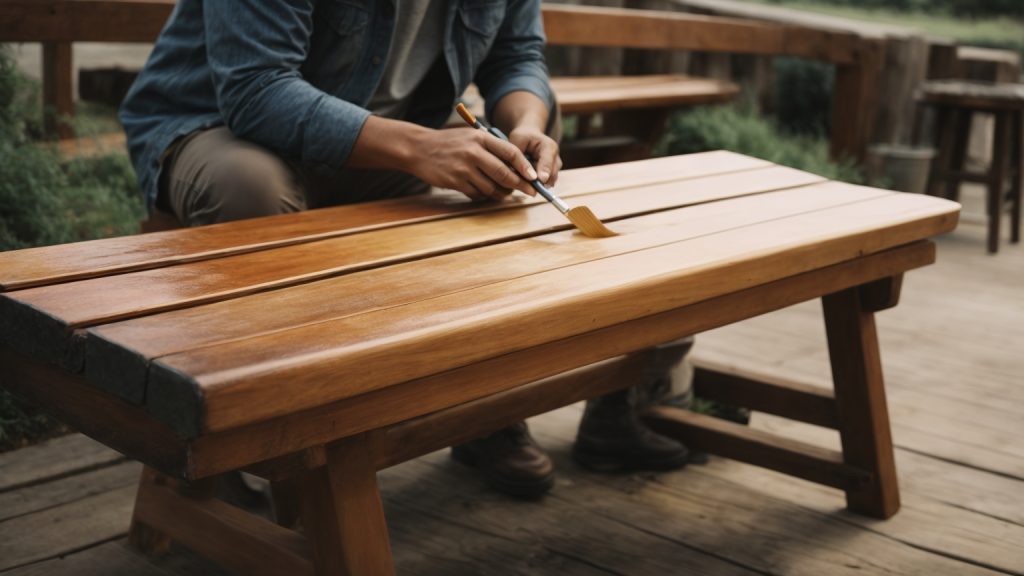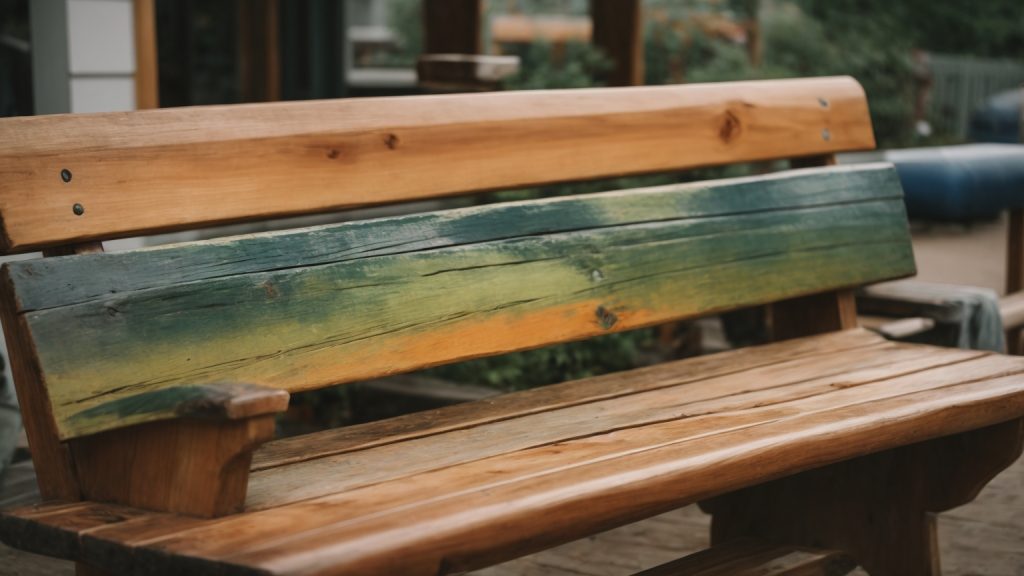Are you looking for a cost-effective way to display your real estate signs? Look no further than creating your own wooden signposts. Not only is it a budget-friendly option, but it’s also a convenient way to have full control over the design and placement of your signs.
To get started, you’ll need some basic woodworking tools and materials, including wood planks, screws, a saw, and a drill. Once you have everything you need, it’s just a matter of cutting the wood to the desired length and shape, drilling holes for the screws, and assembling the pieces together. With a little practice, you’ll be able to create custom signposts that perfectly fit your needs.
Whether you’re a real estate agent looking to save money on signposts or just someone who wants to add a personal touch to their outdoor signage, making your own wooden signposts is a fun and rewarding DIY project. With the right tools and a bit of creativity, you can create beautiful and functional signposts that will last for years to come.
Choosing the Right Wood

When it comes to making a wooden signpost, choosing the right type of wood is crucial. Not all woods are created equal, and some are better suited for outdoor use than others. In this section, we’ll take a look at the different types of wood you can use for your signpost and what to look for in terms of wood quality.
Types of Wood
There are several types of wood that are commonly used for signposts, and each has its own unique characteristics. Here are some of the most popular options:
- Cedar: Cedar is a popular choice for outdoor signs because it is naturally resistant to rot and decay. It also has a beautiful grain pattern and is lightweight, making it easy to work with.
- Redwood: Like cedar, redwood is naturally resistant to rot and decay. It is also very durable and has a distinctive reddish-brown color.
- Pine: Pine is a softwood that is easy to work with and relatively inexpensive. However, it is not as durable as cedar or redwood and may not hold up as well over time.
- Oak: Oak is a hardwood that is very strong and durable. It is also quite heavy, which can make it difficult to work with.
Wood Quality
Regardless of the type of wood you choose, it’s important to select high-quality wood for your signpost. Here are some things to look for:
- Straightness: Look for boards that are straight and free of knots or other defects.
- Density: The denser the wood, the stronger and more durable it will be.
- Moisture content: Make sure the wood is dry before you start working with it. Wet wood can warp or split as it dries, which can ruin your signpost.
- Treatment: If you plan to use your signpost outdoors, consider using pressure-treated wood. This type of wood has been treated with chemicals that make it resistant to rot and decay.
By choosing the right type of wood and paying attention to wood quality, you can create a beautiful and durable signpost that will last for years to come.
Tools and Materials Needed
Essential Tools
To make a wooden signpost, you will need a few essential tools. These include:
| Tool | Purpose |
|---|---|
| Saw | To cut the wood to the desired size |
| Drill | To make holes for screws |
| Screwdriver | To attach the post to the base |
| Sandpaper | To smooth out rough edges |
| Paintbrush | To apply paint or stain |
Additional Materials
In addition to the essential tools, you will also need some additional materials. These include:
- Wood: Choose a sturdy and durable type of wood, such as cedar or redwood. The wood should be at least 4 inches wide and 6 feet tall.
- Post Cap: A decorative piece that goes on top of the post to give it a finished look.
- Base: A sturdy base to anchor the post and keep it upright. You can use a pre-made base or make one yourself.
- Screws: To attach the post to the base.
- Wood Glue: To attach the post cap to the top of the post.
- Paint or Stain: To protect the wood from the elements and add color or texture to the finished signpost.
With these tools and materials, you can create a beautiful and functional wooden signpost that will add charm and character to your home or business.
Designing Your Signpost

Before you start building your wooden signpost, it’s important to design it properly. This will ensure that the signpost looks good and serves its intended purpose. In this section, we’ll go over some important design considerations for your signpost.
Sketching the Design
The first thing you’ll want to do is sketch out your design. This will help you visualize what your signpost will look like and make any necessary adjustments before you start building. When sketching your design, consider the following:
- What message do you want your signpost to convey?
- What kind of style do you want your signpost to have?
- What kind of graphics or images do you want to include?
Once you have a rough sketch of your design, you can start refining it and making any necessary adjustments.
Choosing the Right Size
The size of your signpost will depend on a few factors, including the location where it will be installed and the message you want to convey. Here are some things to consider when choosing the right size for your signpost:
- Make sure your signpost is visible from a distance.
- Consider the height of the signpost and the angle at which it will be viewed.
- Make sure your signpost is proportional to the surrounding environment.
It’s important to choose the right size for your signpost to ensure that it is effective and serves its intended purpose.
By taking the time to properly design your signpost, you’ll ensure that it looks good and serves its intended purpose. Consider sketching your design and choosing the right size to make sure your signpost is effective and visible.
Preparing the Wood
Before you can start making your wooden signpost, it’s important to properly prepare the wood. This involves cutting it to size and sanding it to create a smooth surface for painting or staining. Here are the steps you need to follow:
Cutting the Wood
The first step is to choose a piece of wood that is the right size for your signpost. If you can’t find a block in the right size, choose a piece that is slightly larger, as you can always cut it to size later. Soft wood like pine, beech, or spruce generally makes for good wooden signs.
Once you have your wood, use a saw to cut it to the desired size. Make sure to measure carefully and use a straight edge to ensure a straight cut. If you don’t have a saw, you can often have the wood cut to size for you at a hardware or craft store.
Sanding the Wood
After cutting the wood, the next step is to sand it to create a smooth surface for painting or staining. Sanding is a wood surface preparation step which is very likely to be overlooked. Many tend to believe that bare wood is naturally ready-to-go. However, it’s a crucial step to ensure the quality and uniformity of finished wood signs for home.
Start by using coarse-grit sandpaper to remove any rough spots or imperfections on the surface of the wood. Then, switch to a finer-grit sandpaper to create a smooth surface. Make sure to sand in the direction of the wood grain to avoid creating scratches or marks on the surface.
Once you have sanded the wood, wipe it down with a damp cloth to remove any dust or debris. You can also use a tack cloth to ensure that the surface is completely clean before painting or staining.
By following these steps, you can prepare your wood for making a beautiful and professional-looking wooden signpost.
Creating the Signpost
If you want to make your own wooden signpost, there are a few steps you’ll need to follow. First, you’ll need to decide on the design you want to carve into the wood. Then, you’ll need to gather the necessary materials and tools. Finally, you’ll need to assemble the signpost.
Carving the Design
The first step in creating your signpost is to carve the design into the wood. You can use a variety of tools for this, including chisels, knives, and even a Dremel. If you’re not comfortable with carving, you can also use stencils or decals to create the design.
Before you start carving, make sure the wood is smooth and free of any knots or imperfections. You can use sandpaper to smooth out the surface if needed. Then, sketch out your design on the wood using a pencil. Once you’re happy with the design, start carving.
Take your time and be careful not to remove too much wood at once. You can always go back and make adjustments later. Once you’re finished carving, use sandpaper to smooth out any rough edges.
Assembling the Signpost
Once you’ve carved the design into the wood, it’s time to assemble the signpost. You’ll need a few additional materials for this, including a wooden post, screws, and a bracket.
Start by attaching the bracket to the post using screws. Then, attach the sign to the bracket using more screws. Make sure the sign is level and secure before tightening the screws.
Finally, you’ll need to install the signpost in the ground. Dig a hole deep enough for the post and fill it with concrete. Once the concrete has dried, insert the post and pack soil around it to secure it in place.
With these steps, you can create your own wooden signpost that’s perfect for your home or business.
Finishing Touches
Once you have assembled your wooden signpost, it’s time to add the finishing touches. This is where you can really make your signpost stand out and showcase your personal style. In this section, we will cover two important aspects of finishing touches: painting the signpost and applying the finish.
Painting the Signpost
Painting your signpost is a great way to add color and personality. Here are some tips to help you get started:
- Choose the right paint: Look for a high-quality outdoor paint that is designed to withstand the elements. Acrylic and latex paints are good options.
- Prep the surface: Make sure your signpost is clean and dry before you start painting. Sand any rough spots or imperfections to create a smooth surface.
- Apply the paint: Use a brush or roller to apply the paint in thin, even coats. Allow each coat to dry completely before applying the next one.
- Add details: Once the base coat is dry, you can add details like lettering or designs. Use stencils or freehand painting to create your desired look.
Applying the Finish
Adding a finish to your signpost will help protect it from the elements and give it a polished look. Here are some options to consider:
- Stain: A wood stain will enhance the natural grain of the wood and provide a protective layer. Choose a stain that is designed for outdoor use and apply it with a brush or rag.
- Varnish: A clear varnish will add a glossy finish to your signpost while also protecting it from moisture and UV rays. Apply the varnish with a brush or spray can.
- Sealant: A sealant will create a waterproof barrier that will protect your signpost from rain and snow. Apply the sealant with a brush or spray can.
No matter which finish you choose, make sure to follow the manufacturer’s instructions carefully. Apply the finish in a well-ventilated area and allow it to dry completely before handling your signpost.
With these finishing touches, your wooden signpost will be ready to display proudly in your yard or garden.
Installation Tips
Choosing the Location
Before installing your wooden signpost, it’s important to carefully choose the location. Here are some tips to help you make the best decision:
- Consider the purpose of the sign: Is it a directional sign, a warning sign, or an informational sign? The location should be easily visible and accessible to the intended audience.
- Check local regulations: Make sure you are allowed to install a signpost in the chosen location. Some areas have specific rules and regulations regarding sign placement.
- Avoid obstructing views: Don’t place the signpost where it may block the view of drivers or pedestrians.
- Consider the ground conditions: Make sure the ground is level and stable enough to support the signpost.
Installing the Signpost
Once you have chosen the location, it’s time to install the signpost. Here are some tips to help you get the job done:
- Dig the hole: Use a post hole digger to dig a hole that is deep enough to support the signpost. The hole should be at least 1/3 the length of the signpost.
- Insert the signpost: Place the signpost in the hole and make sure it is straight and level.
- Secure the signpost: Use concrete to secure the signpost in place. Fill the hole with concrete and allow it to dry completely.
- Add the sign: Once the concrete is dry, attach the sign to the signpost using screws or bolts.
Remember to take your time and follow these tips to ensure your wooden signpost is installed correctly and safely.
Nikmati pengalaman bermain slot paling fun di Vio88! Temukan berbagai permainan slot yang seru dan menarik dengan peluang besar untuk meraih kemenangan. Ayo, bergabunglah sekarang dan rasakan sensasi bermain di Vio88!



